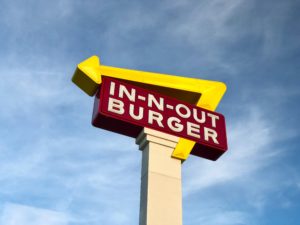
In the advent of fast casual dining discussions of drive-thru restaurants have fallen by the wayside, as a LA permit expediter I’d like to provide a snapshot of the process of permitting drive-thru’s in Los Angeles.
I will cover site selection, zoning requirements, site plan review, and plan approvals. If you have questions that are specific to a site you are looking at just give me a call and I’ll provide a consultation.
Site Selection:
Finding a hard corner on just about any street in Los Angeles county, let alone city of LA, is going to be a feat in of itself. Not to mention finding something that is somewhat reasonable in price. Once you find a site that seems to fit your criteria it is essential to conduct research on the full site’s history. This means getting all:
- issued permits,
- zoning cases,
- grading
- geological soils reports,
- disaster inspections,
- code enforcement violations,
- getting insight into any currently open applications with the city.
For more on how to do this using the Los Angeles Department of Building and Safety’s online portal check out our article, https://www.permitadvisors.com/uncategorized/new-on-line-city-permit-process-do-i-still-need-a-permit-expediter/
Zoning Requirements:
Los Angeles has been going through many changes when it comes to the general plan and zoning in the last five years, to say the least. Every election year yields controversial and highly volatile parties each vying for what they think is best. We are going to step away from that landscape for a moment and focus on what is actually published in the clearance handbook as published on the city’s website. The full handbook can be found here.
- Conditional Use approval is required when a site on a lot “or across the street from a residential zone or residential use.” This means if the drive-thru is too close to residential, even if it is zoned for commercial, a conditional use approval will need to be obtained. This means a hearing for the local residents to decide if they want a drive thru at that location.
- If the lot and surrounding areas are in a commercial zone then “a use variance is required” which should simplify everything.
Site Plan Reviews:
Site plan reviews take some time and much preparation which means most of my clients would like to avoid them. However, when it comes to drive-thru’s the city’s handbook outlines 2 clear requirements:
- “Any change of use to a drive-thru fast-food establishment which results in a net increase of 500 or more average daily trips as determined by the department of transportation.”
- “Any change of use to fast-food establishment that is not a drive-thru which results in a net increase of 1,000 or more average daily trips as determined by the department of transportation.”
In both cases a study conducted by the department of transportation is required in order to complete your site plan review.
Plan Approvals:
Ah yes the planning department, one of the places I work in quite frequently. This may seem easy by far when comparing to DOT or conditional use hearings and the city’s outlines one real guideline when it comes to drive-thru fast food restaurants.
- “Existing restaurants which have a drive-thru will be classified as having deemed to be approved conditional use status. Modifications to expand the drive-thru shall be subject to a ‘Plan Approval’ by city planning.” In other words, once there is a drive-thru already in place then planning will only get involved if you’re expanding the restaurant in someway or if it intensifies the use. Whew!
Permitting:
Once the entitlements and land use portions are completed for your drive-thru, the permits are very similar to permitting anything else. However, I’d like to note that you may have to package different aspects in separate permits. For example, parking and signage will be separate from any tenant improvement permits. But at that point, just call me and I can advise on how to best tackle the permits.
Drive-thru’s aren’t as popular as they once were in metropolitan areas however, that doesn’t mean they still aren’t used or aren’t profitable, that would be far from the truth.
